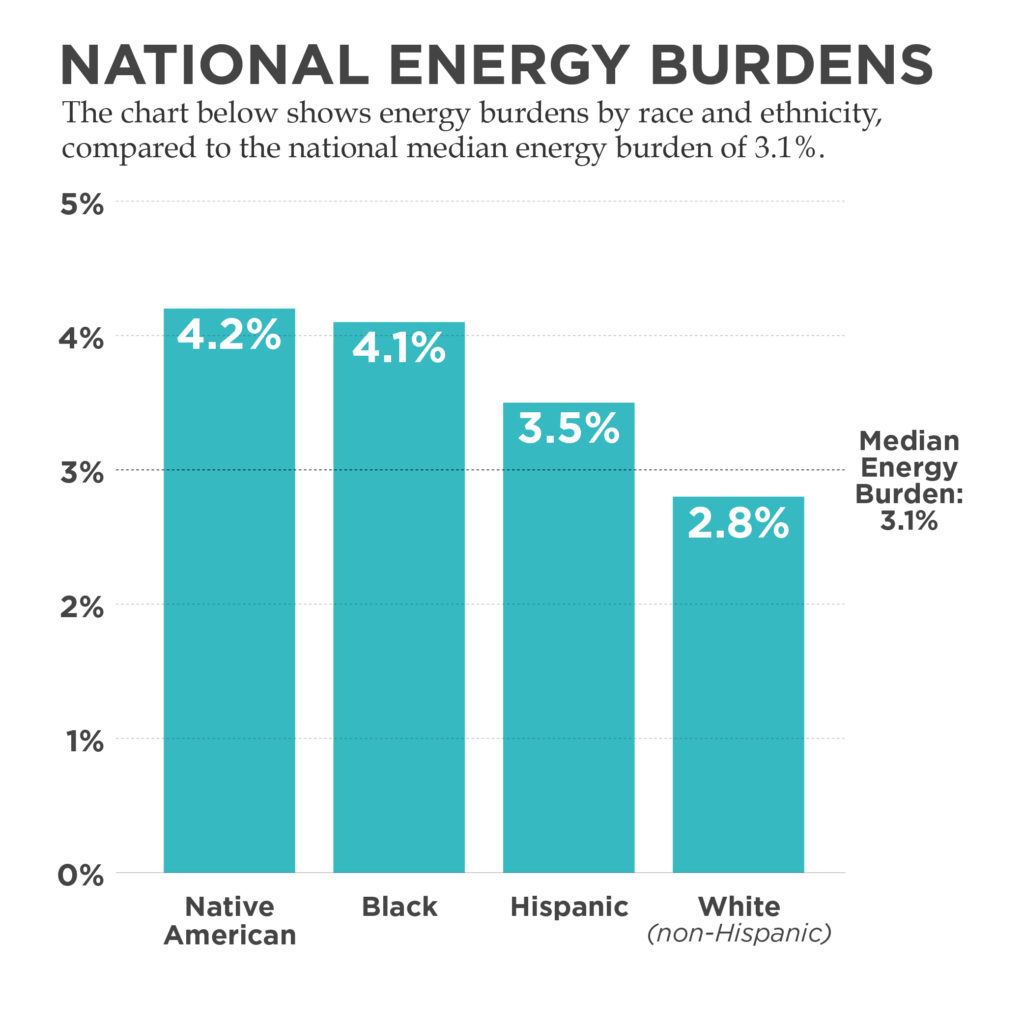
Low-income households, as well as Black, Hispanic and Native American households, are paying a much larger share of their income on energy bills than middle-class white households, with inefficient housing a major contributor to the problem, a new report found.
One in four American households have disproportionally high energy burdens because they pay more than 6% of their income on heating and cooling bills, according to a report by the American Council for an Energy Efficient Economy. Two of every five low-income households have “severe” burdens, spending more than 10% of their income on energy costs.
The report’s findings are based on 2017 data, and as the COVID-19 pandemic plunges vulnerable households even further into financial crisis, they’re likely paying an even greater share of income to heat and cool their homes.
“Now, many of the same communities that were struggling to pay bills before the global pandemic are being hit the hardest by job losses and could be at particular risk for shutoffs ahead,” said Ariel Drehobl, senior research associate at ACEEE and the report’s lead author.
The median energy burden for white households is 2.8%, according to the report. But it’s 4.2% for Native American households, 4.1% for Black households and 3.5% for Hispanic households.
Low-income families—those with incomes less than 200% of the federal poverty level—spend 8.1% and older adults spend 4.2% of their incomes on energy costs.
This issue is top of mind for co-ops as their territories serve more than 92% of the nation’s persistent poverty counties, according to Census Bureau data.
“Because cooperatives were borne out of the need to address the lack of access to electricity in nine of 10 households in rural America in the 1930s, they have a long history of working to enable energy access in their communities and reduce energy burdens,” said Adaora Ifebigh, who heads NRECA’s Advancing Energy Access for All initiative, which helps co-ops share experiences and advice on efforts to ensure that grid advancements benefit all communities.
ACEEE’s Drehobl analyzed energy burden trends in 25 cities and nine regions throughout the country. Key findings include:
- Across all regions, low-income household energy burdens are 2.1 to 3 times higher than the median energy burden.
- The nation’s east south-central region (Alabama, Kentucky, Mississippi and Tennessee) has the greatest percentage of highly burdened households at 38%.
- The south Atlantic region has the greatest number of households with high burdens (6.3 million). The region consists of Delaware, Florida, Georgia, Maryland, North Carolina, South Carolina, Virginia, West Virginia and Washington, D.C.
Families with high energy burdens tend to live in homes with bad insulation or outdated heating or air conditioning systems, but only 17% of households getting energy efficiency improvements were low-income, the report found.
“If we focus on supporting those most in need to make their homes more efficient, those investments can go a long way to reduce their bills,” said Drehobl.
Access to renewable energy can often be out of reach for low-income households, but a $1 million Department of Energy grant recently awarded to NRECA will allow six co-ops to research “more ways to make solar energy affordable for low-income households and help reduce their energy burdens,” said Ifebigh.
“We hope co-ops’ willingness to work with lawmakers to support their communities will make sure energy technologies save money, improve quality of life and reduce emissions for all members, regardless of income.”
Victoria A. Rocha is a staff writer at NRECA.